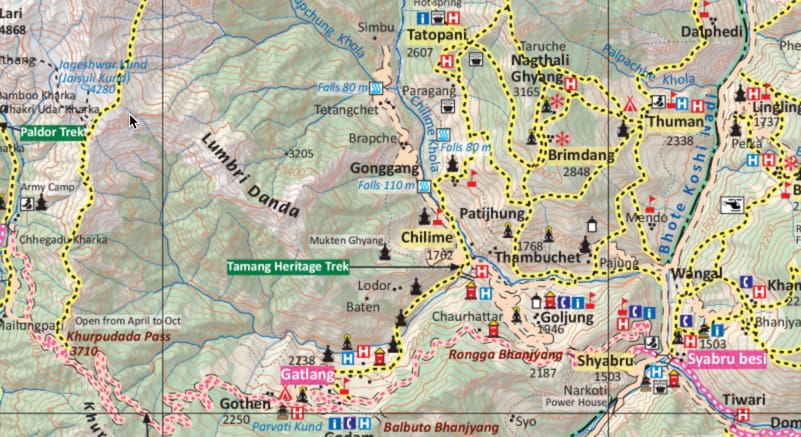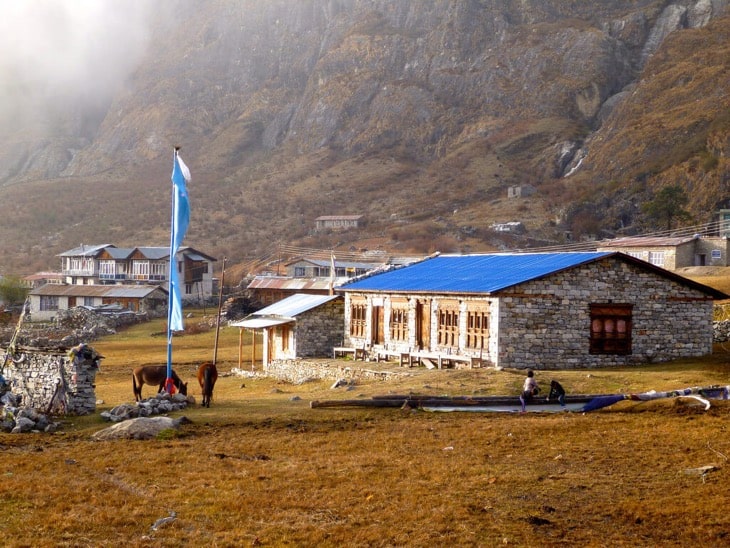Tamang Heritage Trek
- Satisfied Client
- Personalised Guide
- Instant Response
Get Instant Response:
+977-9851329446 (Whatsapp)
| Starts at: Syabrubesi | Ends at: Syabrubesi |
| Trek Region: Langtang | Transport: Public Bus |
| Duration: 11 days | Trip Grade: Moderate |
| Max Altitude: 4800 m / 15655 ft (Kyanjing Gompa) | Accommodation: Teahouse |
The Tamang Heritage Trek starts by driving from Kathmandu to Syafru Beshi and runs through the beautiful and lush Langtang Valley with breathtaking views of Langtang and Ganesh Himal.
Villages on the route are occupied by Tamang people, closely related to Tibetans, and so the culture is Buddhist with a good scattering of prayer wheels, chortens, prayer flags, and mani stones along the trails.
Although situated in a district badly hit by the April 2015 earthquake, this heritage trail was hardly affected at all and reopened to visitors three months after the quake and remains an area of outstanding beauty and culture.
However, the trek takes in Tatopani (literally ‘hot water in Nepali) where there used to be warming hot springs. The hot springs have sadly disappeared after the earthquake.
The Tamang Heritage Trail lies in what was previously a restricted area near the Tibet border and was opened up to visitors lately.
The people in this area have a culture, tradition, and religion that goes back hundreds of years, and the craftsmanship, dress, and stone-mud houses are testimony of this ancient background.
So, too is Kyanjin Gompa where the atmosphere is serene as only a Buddhist monastery can be, and where the stunning mountain views cannot help but add immensely to the experience!
For those interested in anthropology as well as trekking, this is the perfect trip.
Tamang Heritage Trek Outline Itinerary
Day 1: Kathmandu to Syafru Beshi (Drive)
Syabrubesi – 1550 m / 5085 ft – 7 to 8 hrs
Day 2: Syafru Beshi to Gatlang
Gatlang – 2380 m / 7217 ft – 5 hrs
Day 3: Gatlang to Tatopani
Mundu – 3430 m / 11253 ft 6 to 7 hrs
Day 4: Tatopani to Thuman
Kyanjing Gompa – 3870 m / 12696 ft- 3 hrs
Day 5: Thuman to Briddim
Tserko Ri – 5000 m / 16404 -7 to 8 hrs
Day 6: Briddim to Lama Hotel
Lama Hotel – 2380 m / 7808 ft – 6 to 7 hrs
Day 7: Lama Hotel to Langtang village
Langtang village – 3430 m / 11253 – 6 to 7 hrs
Day 8: Langtang village to Kyanjing Gompa
Kyanjing Gompa – 3870 m / 12696 ft – 4 hrs
Day 9: Kyanjing Gompa to Lama Hotel
Lama Hotel – 2380 m / 7808 ft – 6 hrs
Day 10: Lama Hotel to Syafru Beshi
Syafru Beshi – 1550 m / 5085 ft – 6 to 7 hrs
Day 11: Syafru Beshi to Kathmandu (Drive)
Kathmandu – 1300 m / 4265 ft – 8 to 9 hrs
Not satisfied with this Itinerary?
Are you interested on planning custom trip? It only takes 2 minutes.
Includes
- 10 nights accommodation in mountain teahouses
- Guide for 11 days
- Kathmandu Syafru beshi Kathmandu local bus
- Langtang national park permit
- Trekkers information management system card
- 11 x breakfast,10 x lunch and 10 x dinner while on trek
- One porter for 11 days USD 174 (Optional)
- Private Jeep USD 260 (Optional)
Tamang Heritage Trek Map

